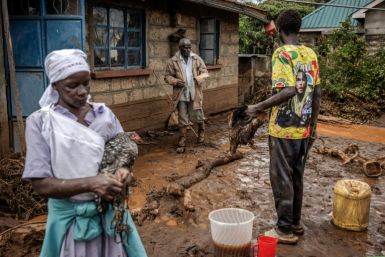Australia Honey Bee Producers Fight Off Asian Competition
The Department of Agriculture, Fisheries and Forestry (DAFF) killed last week about 300 Asian honey bees found on a cargo ship in Townsville, which came from Port Moresby. The operation was made after DAFF biosecurity officers inspected shipping containers and the vessel which subsequently led to the extermination of the bees.
The move represents the efforts of the Australian government and the Australian Honey Bee Industry Council to fight off competition from Asian honey bee producers. It also seeks to prevent the entry of Varroa mites in Australia, believed to be carried by the Asian honey bees.
The DAFF warned that unless the Varroa mites were blocked, it could reduce by 90 to 100 per cent the pollination services that bees provide. About 80 crops or 30 per cent of what Aussies eat depend on pollination, according to Boris Baer, coordinator of the University of Western Australia Centre for Integrative Bee Research.
He warned that the impact of the Varroa mite and the drop in bee numbers would be lower food stock and higher food prices.
"We mass produce food - it has to be cheap and affordable and we can't therefore afford this major decline in bees - we need them for the pollination," The Sydney Morning Herald quoted Mr Baer.
Biosecurity Queensland initially detected the incursion of the Asian honey bee in Cairns in May 2007.
A report made by the Rural Industries Research and Development Corporation (RIRDC) in April 2010 estimated the potential cost of the Asian honey bee incursion to public health to range from $84,114 to $88,637 per 100,000 population. In the area of public nuisance, the cost is placed from $4,580 to $33,660 per 100,000 people.
Outside bee farmers who consider bees their source of livelihood, bees have been considered more of a nuisance due to the costs of removal and extermination.
The RIRDC report cited a study by The Australasian Society of Clinical Immunology and Allergy that up to 3 per cent of the country's exposed population could have immediate systemic allergic reaction to an insect sting, which would mean about 600,000 Australians are potential subjects to the condition.
The impact of it would be to add to public health costs estimated at 1,012 hospitalisations for bee stings with an average stay of 1.2 days. The estimate is based on a 2002 to 2005 study which reported 2,754 hospitalisations on account of bee stings or 981 per year.
The RIRDC drew up a Response Plan eradication campaign to protect Australia's honeybee industry which is made up of about 1,700 commercial producers spread throughout the country. Most of these producers are small and medium-scale enterprises.
Bee farmers at mostly migratory. They move to areas where the nectar flows are strongest. They rely on the coastal and other areas with high rainfall with eucalyptus forest for the production of honey.
The RIRDC report said the Apis cerana javana or type of Asian honey bee strain which Australia is battling is endemic to Java, Indonesia. The same specie is considered an invasive pest in Papua New Guinea and the Solomon Islands because it could not be domesticated and its pollination activity could not be controlled for managed pollination services.
However, while the Asian honey bee produces little honey, it robs honey from European honey bees (Apis millifera) which causes significant colony losses, cut in commercial honey production and lower managed pollination.
It has also been identified as a threat to urban life as the bees establish nests in cavities in houses while in the rural area, it forces native insects and mammals out of their natural nesting sites and competes for food resources.
A 2001-02 study said that 62 per cent of total honey production in Australia was from businesses with more than 500 hives while 16 per cent had up to 250 hives. The bulk of the producers were in the Australian states of Queensland, New South Wales and Victoria.
At that time, the industry produced an average of 17,300 kilogrammes of honey per business. On a per hive basis, production was at 67 kilogrammes on a national average while SMEs registered 48 kilogrammes and medium and large producers logged 82 kilogrammes per hive.
During that period, average hone sales was $32,800 at $1.80 per kilogramme.
Latest DAFF figures said that the contribution of the Australian honey and bee products industry has gone up to $1.7 billion of agricultural production per year.
The killing of the Asian honey bees came at a time that Tasmania's 185 beekeepers have started to truck about 17,000 hives to the north-west to start production of leatherwood honey. Tasmania's rainforest is where the eucryphia lucida is found, which is also commonly known as leatherwood.
At 100,000 bees per hive, that is about 1.7 billion bees that have started their production.
Lindsay Bourke, president of the Tasmanian Beekeepers' Association, described the leatherwood honey as tasting like that of the wilderness and the closest thing to organic honey. He pointed out that its long-chain sugars help the body absorb nutrients and has medicinal qualities.
The first harvest of Tasmania's leatherwood honey would be available in shops by the end of January, Mr Bourke said.






